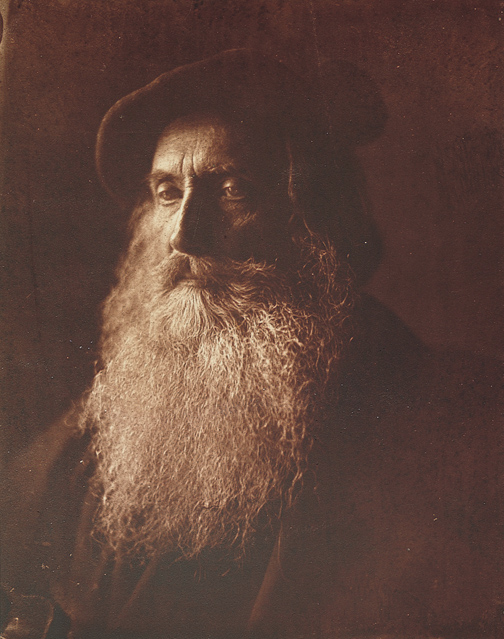One of the most important photographers of the 1800s was born June 11,1815, in Calcutta, which is now in India and known as Kolkata. There are a number of surprising things about this particular birthday bio.
First, the important photographer we’re talking about is a woman, Julia Margaret Cameron. She was born into a British family — her father, James Pattle, worked for the East India Company. It was an upper-class family, and Julia and her six sisters were sent to France for school. Julia lived in France between the ages of 3 and 19, after which she returned to India. The year after she returned, though, she was sick several times. The tradition among Europeans living in India at the time was to travel to South Africa for their health, and Julia and her mother visited in 1835. While there she met Charles Cameron. He, too, was convalescing in South Africa; he lived in India where he worked on education and legal reform. The two began a relationship, and were married two years later. They bought coffee plantations in Sri Lanka and moved there.
The Camerons had six children, but raised eleven — they raised five orphan children of relatives, and adopted an Irish girl they found begging. If you’ve noticed that “photography” hasn’t been mentioned yet, you’re right. Just wait.
Another acquaintance Julia Cameron had made in South Africa was the astronomer John Herschel. He had been there to observe the sky in the southern hemisphere, and they became friends. When Cameron returned to India, and moved to Sri Lanka, she and Hershel continued to correspond, and that’s where she found out about photography. Herschel sent her some sample photos in 1842 — the first photos she’d ever seen.
In 1845 the Camerons moved to London, where Julia got involved with the arts. One of her sisters also lived in London and hosted an artistic salon where painters and writers gathered, and Julia was also a member. She began writing poetry, started a novel, and published an English translation of a popular long poem by the German poet Gottfried Bürger. And thanks to her involvement in the salon, we know what she looked like at the time; the painter George Frederic Watts painted her portrait (which is now in the National Portrait Gallery in London).
The Camerons were a wealthy family; by the 1850s Charles Cameron was one of the largest landowners in Sri Lanka (although at the time he called it Ceylon). They followed the expected course and moved out of London into the country. By 1860 they’d settled in a country estate right next to the poet Alfred Tennyson. They kept up their patronage of the arts, though, and entertained famous artists, poets, and writers constantly. No photographers.
All that (finally) changed in 1863, when Julia Cameron was 48. Her daughter and son-in-law gave her a camera. They meant it as simply a diversion; something for Cameron to do when her husband was visiting his coffee plantations in Sri Lanka. She converted a chicken coop into a studio. She later wrote “I began with no knowledge of the art… I did not know where to place my dark box, how to focus my sitter, and my first picture I effaced to my consternation by rubbing my hand over the filmy side of the glass.”
Her first portrait — or at least the first one she considered a success — was of a nine-year-old named Annie Philpot. She concentrated on portrait photography, and was pretty successful. She was elected to the Photographic Society of London, held yearly exhibitions of her work, and her prints began to be sold through a prominent art dealer in London. In 1865 a museum bought 80 of her prints and offered her room to use as a portrait studio. She was the museum’s first artist-in-residence (it was the Victoria and Albert Museum). She also began writing her autobiography, Annals of my Glass House. She never finished it, but it was published posthumously.
Julia Cameron was extremely prolific once she finally discovered photography, and was famous in her day. But later she was largely forgotten until about 1940, when the historian of photography Helmut Gernsheim noticed some of her photos hanging in, of all places, the waiting room in a railway station. He did some research and in 1948 published a whole book on her work (Julia Margaret Cameron; Her Life and Photographic Work). Her reputation since then has probably grown; in the Encyclopedia of Ninteenth-Century Photography Colin Ford writes “Her visualisations of poetry are different in style and achievement from those of any other photographer of the time.” Cameron was inducted into the International Photography Hall of Fame and Museum in 2019, and a number of museums around the world have had exhibits focusing on her work. And you can always see her work at the Dimbola Museum and Galleries on the Isle of Wight; it’s owned and run by the Julia Margaret Cameron Trust.

Portrait of Henry Taylor by Julia Margaret Cameron, 1865
